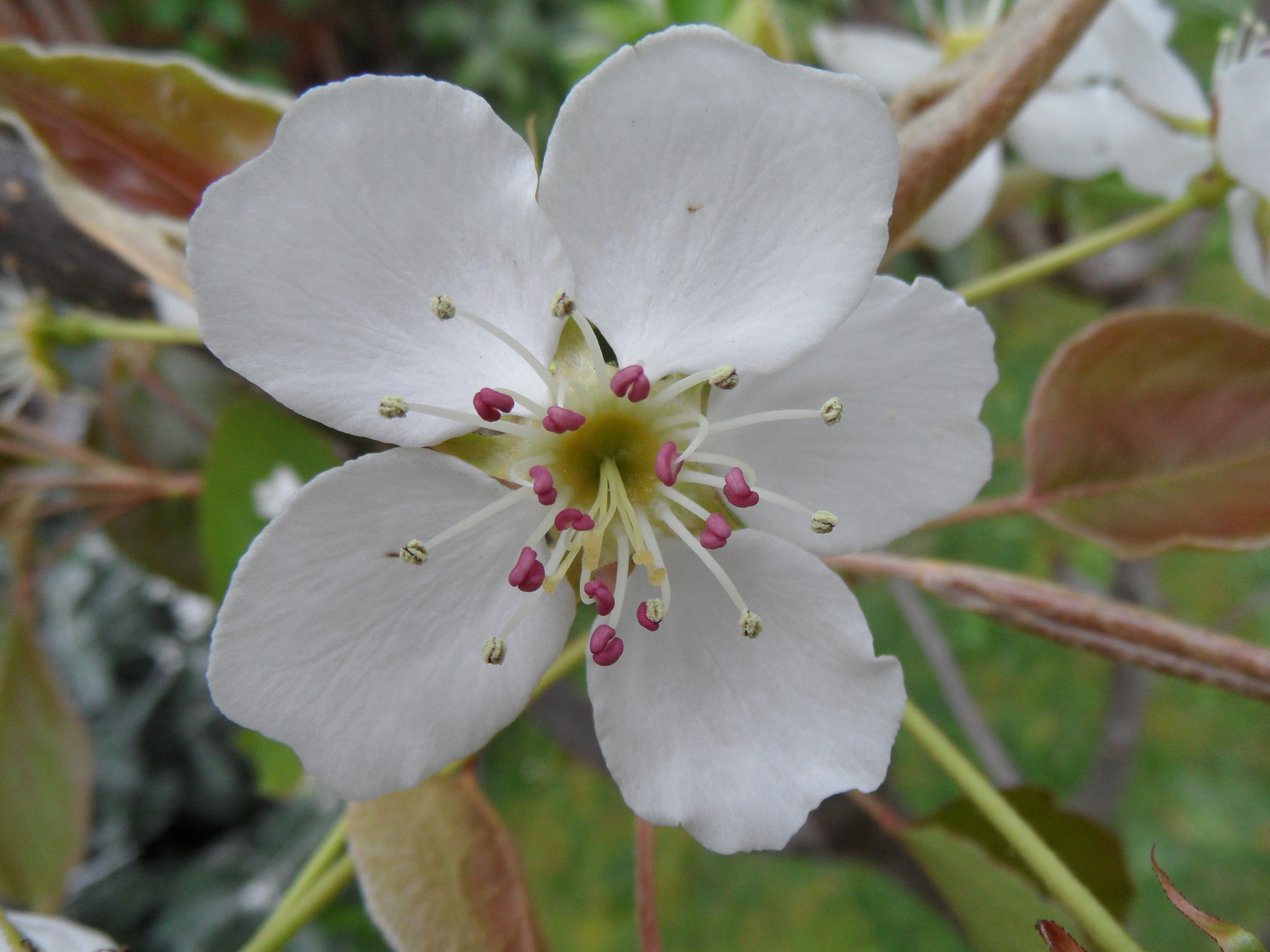
Classical name for the common pear, Pyrus communis.
Deciduous or semi-evergreen trees or shrubs, the shoots sometimes ending in a thorn. Leaves alternate, simple, rarely lobed, margins saw-toothed or round-toothed, mostly reddish in autumn; stipulate. Flowers in lateral clusters, appearing with or before the leaves, sometimes unpleasant-smelling. Sepals 5, either persistent on the fruit or soon shed. Petals 5,mostly white but occasionally pink. Stamens 20(-30), anthers usually red. Carpels (2-)5. Styles the same number as the united carpels. Fruit a pome, flesh gritty with stone cells, wall of the core cartilaginous; seeds dark brown to black, mostly 2 per chamber.
Jill Kellow, James Will & Roger Spencer
Grown for the ornamental leaves (which are sometimes grey-hairy or colour red in autumn) or for the edible fruits. Mediterranean and warm-climate species will endure stony, impoverished soils in exposed localities.
The edible pears are in two cultivar groups: the traditional European Pear, P. communis, which includes the older soft-fleshed cultivars; and the relatively recently introduced, crisp-fleshed Asian Pear cultivars of P. pyrifolia (Nashi Pear, 'nashi' being Japanese for pear).
The use of clonal material reduces the likelihood of erratic growth and flowering periods in avenue plantings.
20-30 species from Europe, E Asia and N Africa.
Pears have long been confused, a difficulty compounded by the presence of a range of hybrids. They may be divided into four main groups: East Asian Pea Pears - a group containing P. calleryana. The E Asian species are resistant to pear slug, are later leafing and flowering and have relatively small fruits. Large-fruited East Asian Pears - including P. ussuriensis, P. pyrifolia, P. pashia (partly self-fertile). North African Pears - Not grown for ornament or fruit. European and West Asian Pears - P. communis, P. salicifolia (self-sterile).
Seed or grafting onto P. communis stock.
A collection of 20 species is held at the Waite Institute in Glen Osmond, SA, and this collection has been placed on the SA National Trust Register of Significant Trees. A trial plot in the Claremont Orchard at the Waite has produced a number of crosses, a few showing ornamental potential for Australian conditions. Mt Lofty Bot. Garden, Adelaide, had 22 taxa in 1991.
TAS: Launceston (City Park, the Napoleon Pear Tree. Commemorative. Ptd in the old Governor's Cottage Grounds on this site in 1847).
Terpo (1985), Kellow & Will (1995).
Source: (2002). Rosaceae. In: . Horticultural Flora of South-eastern Australia. Volume 3. Flowering plants. Dicotyledons. Part 2. The identification of garden and cultivated plants. University of New South Wales Press.
